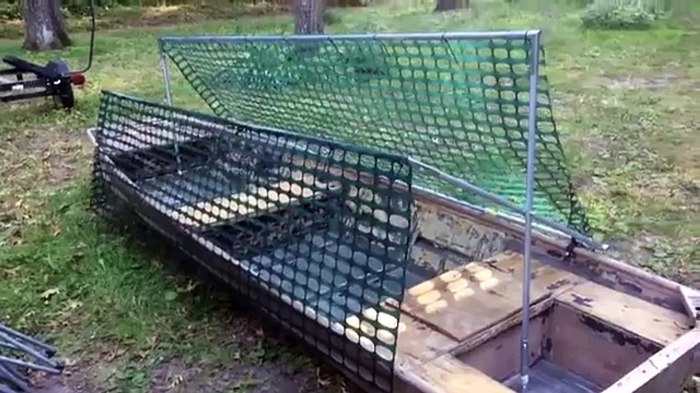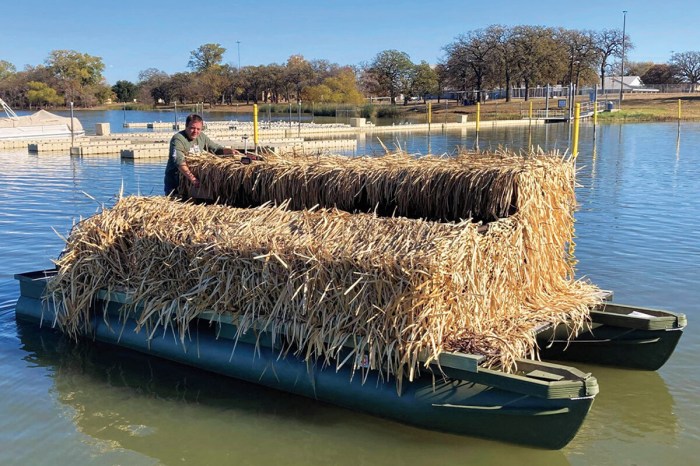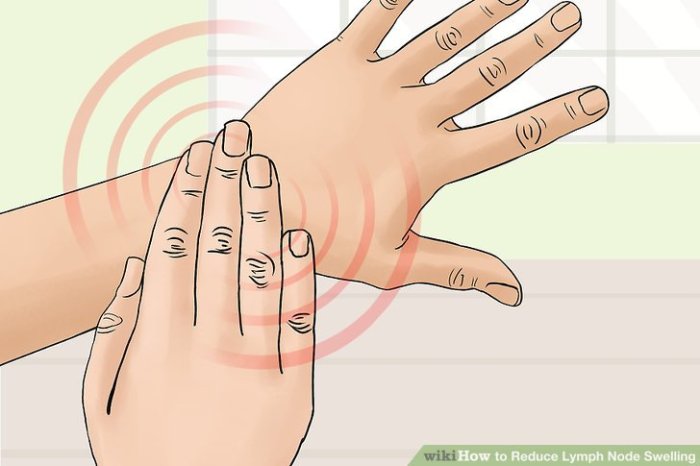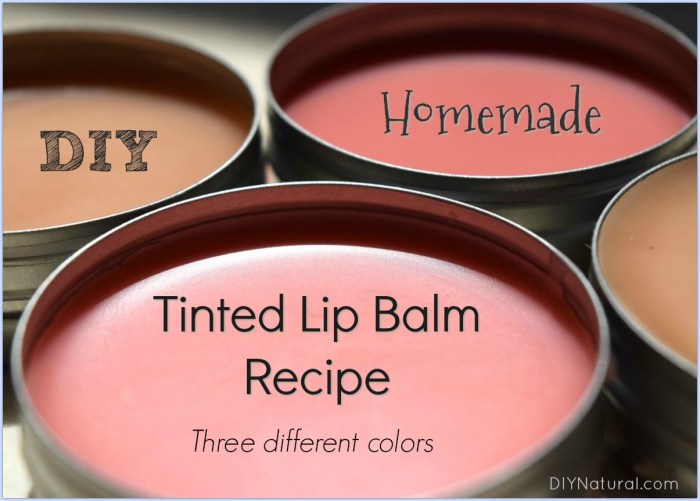DIY Duck Boat Blind: Building your own duck boat blind opens a world of possibilities for the avid waterfowler. This project allows you to create a personalized hunting sanctuary, tailored to your specific needs and hunting style. Not only does it offer a unique and satisfying experience, but it can also be a significant cost-saver compared to purchasing a pre-made blind. Whether you envision a floating blind that moves with the tides or a stationary structure anchored in a prime location, the possibilities are endless.
From meticulously planning the design to meticulously crafting each component, building a DIY duck boat blind is a rewarding journey. It’s an opportunity to exercise your creativity and technical skills while enhancing your hunting experience. The key to success lies in careful planning, utilizing quality materials, and understanding the importance of effective camouflage. With a little dedication and effort, you can construct a durable and effective blind that will provide years of enjoyment and successful hunts.
Materials and Tools
Building a DIY duck boat blind requires careful planning and selection of appropriate materials and tools. The right materials ensure durability and effectiveness, while the right tools make construction easier and more efficient.
Structural Materials
The foundation of your duck boat blind is built on sturdy structural materials. These materials provide the framework and support for the entire blind.
- Plywood: Marine-grade plywood is essential for its resistance to moisture and decay. Use 1/2-inch or 3/4-inch plywood for the main structure, and 1/4-inch plywood for the roof.
- 2×4 Lumber: Use pressure-treated 2×4 lumber for the frame, as it resists rot and decay. This lumber is used for the walls, floor, and roof supports.
- Metal Brackets: Brackets made of galvanized steel or stainless steel are ideal for securing the frame to the boat and for adding stability.
- Fasteners: Choose stainless steel screws or galvanized nails for their resistance to corrosion.
Camouflage
Effective camouflage is crucial for blending into the environment and maximizing your hunting success.
- Duck Blind Material: Use natural materials like reeds, cattails, or burlap for a realistic look. Alternatively, you can use synthetic materials like camo netting or fabric.
- Camo Paint: Apply camo paint to the exterior of the blind to further blend it with the surrounding vegetation. Choose colors that match the natural environment where you’ll be hunting.
- Zip Ties: Use zip ties to secure the camouflage material to the frame, allowing for easy removal and adjustment.
Accessories
Accessories enhance the functionality and comfort of your duck boat blind.
- Shooting Holes: Cut shooting holes in the blind’s walls for clear lines of sight. Use a drill and a hole saw for precise cuts.
- Duck Decoys: Place decoys in front of the blind to attract ducks. Choose decoys that mimic the local duck population.
- Duck Call: Use a duck call to mimic the sounds of ducks and attract them to your location.
- Duck Blind Seat: Add a comfortable seat for prolonged hunting sessions.
Tools
The right tools are essential for building a successful duck boat blind.
- Circular Saw: Use a circular saw to cut plywood and lumber to the desired dimensions.
- Drill: Use a drill to create pilot holes for screws and to attach the frame to the boat.
- Tape Measure: A tape measure is crucial for precise measurements and accurate cuts.
- Level: Use a level to ensure that the frame is square and stable.
- Safety Glasses: Always wear safety glasses to protect your eyes from flying debris.
- Work Gloves: Work gloves protect your hands from splinters and other hazards.
Safety and Regulations

Building and using a duck boat blind can be a rewarding experience, but it’s crucial to prioritize safety. Understanding and adhering to relevant regulations and guidelines is essential for a safe and enjoyable hunting experience. This section will provide insights into essential safety considerations and regulations to ensure a responsible and enjoyable hunting experience.
Safety Precautions, Diy duck boat blind
It’s vital to prioritize safety when building and using a duck boat blind. The following points Artikel essential safety precautions:
- Secure the Blind: Ensure the blind is securely anchored to the boat or the ground to prevent it from being blown away or becoming unstable in windy conditions.
- Fire Safety: Never use open flames or campfires inside the blind. Use battery-powered lanterns or headlamps for illumination. If you must use a heater, choose one with a safety shutoff mechanism.
- Boat Stability: Be mindful of the weight distribution within the boat, especially when entering and exiting the blind. Overloading the boat can lead to instability and potential capsizing.
- Weather Conditions: Be aware of weather forecasts and avoid hunting in severe weather conditions, such as strong winds, heavy rain, or thunderstorms.
- Life Jackets: Always wear a properly fitted life jacket while hunting from a boat. Ensure everyone in the boat is wearing a life jacket, even if you’re just a short distance from shore.
- Navigation Safety: Familiarize yourself with the local waterways and navigate cautiously, especially in areas with restricted visibility or heavy boat traffic.
- Communication: Let someone know your hunting plans, including your location and estimated return time. Carry a communication device, such as a cell phone or VHF radio, in case of emergencies.
Regulations and Guidelines
Regulations regarding duck hunting and blind construction vary by state and jurisdiction. Familiarizing yourself with the specific rules in your area is essential. Here are some common regulations:
- Blind Construction: Many states have regulations regarding the size, shape, and materials used for duck boat blinds. Check with your local wildlife agency for specific guidelines.
- Hunting Seasons and Limits: Duck hunting seasons and bag limits are regulated to ensure sustainable populations. Consult your state’s wildlife agency for specific dates and limits.
- Hunting Licenses and Permits: A valid hunting license and any required permits are necessary to hunt ducks. Obtain these documents well in advance of your hunting trip.
- Waterfowl Identification: Hunters must be able to identify different species of waterfowl to avoid accidentally shooting protected species. Invest in a reliable field guide or online resource for identification.
- Ethical Hunting Practices: Follow ethical hunting practices, such as using non-lead shot and avoiding excessive hunting pressure on waterfowl populations. Be mindful of the impact of your actions on the environment and wildlife.
Maintenance and Care: Diy Duck Boat Blind

Just like any other piece of equipment, your DIY duck boat blind will need regular maintenance to ensure it lasts for years to come. Taking the time to clean, repair, and store your blind properly will help to protect it from the elements and extend its lifespan.
Cleaning the Blind
Keeping your blind clean is essential for preventing the growth of mold and mildew, which can damage the materials and make it less effective.
- After each use, remove any debris, such as leaves, twigs, and mud, from the blind.
- Use a mild soap and water solution to wash the exterior of the blind.
- If your blind is made of fabric, make sure to dry it completely before storing it.
Repairing the Blind
Over time, your blind may experience wear and tear, especially if it’s exposed to harsh weather conditions.
- Regularly inspect the blind for any rips, tears, or loose seams.
- Repair any damage as soon as possible to prevent further deterioration.
- Use a strong, waterproof sealant to repair any leaks or holes in the blind.
Storing the Blind
Proper storage is crucial for protecting your blind from damage during the off-season.
- Store the blind in a dry, well-ventilated area.
- Avoid storing the blind in direct sunlight, as this can cause fading and damage.
- If possible, store the blind off the ground to prevent moisture buildup.
Protecting the Blind from Weather Damage
The elements can take a toll on your duck boat blind, especially during harsh weather conditions.
- Use a waterproof cover to protect the blind from rain, snow, and wind.
- Consider using a tarp or other protective material to cover the blind during periods of heavy rain or snow.
- Regularly inspect the blind for any signs of damage from weather conditions and make repairs as needed.
Creating a DIY duck boat blind is a testament to the passion and resourcefulness of waterfowlers. It’s a project that allows you to personalize your hunting experience, ensuring a comfortable and strategic advantage in the field. From the initial planning stages to the final touches of camouflage, each step offers a sense of accomplishment and pride in your creation. The satisfaction of successfully building your own blind and using it to bag your next trophy duck is truly rewarding. So, gather your tools, materials, and a touch of hunting spirit, and embark on this exciting DIY project.
Building a DIY duck boat blind can be a fun and rewarding project. It’s important to consider the materials and design carefully, and to make sure it’s sturdy enough to withstand the elements. If you’re looking for a stimulant to help you stay focused on the project, you might be interested in learning more about desoxyn , but remember that any medications should be used only as prescribed by a doctor.
Once your blind is complete, you’ll be ready for a successful duck hunting season.



